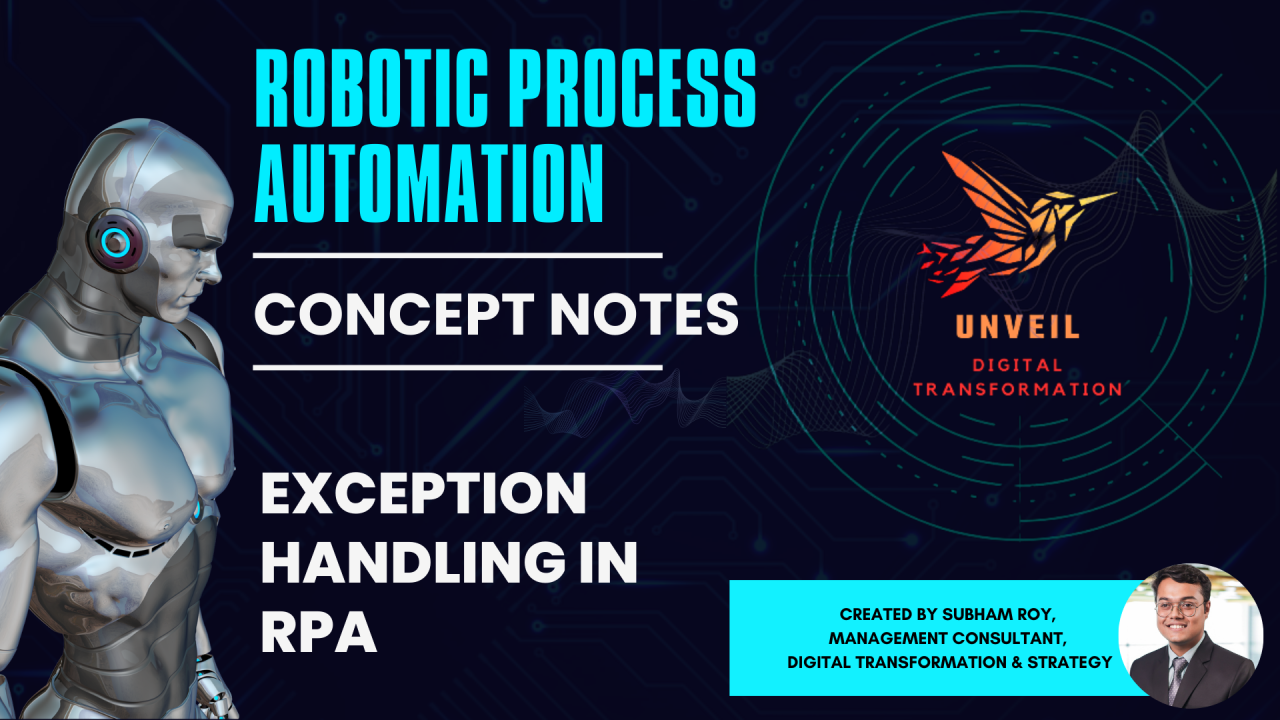
Ed 57 - Exception Handling in RPA: A Critical Component of Robust Automation
Subham Roy
Senior Management Consultant @GT | Digital Strategy and Transformation | Actively Creating/Implementing Organization Level Digital Solutions/Operational Strategy | GLIM PGPM Co'23 (Cum Laude)
Dear Digital Transformation Enthusiasts,
Welcome to the 57th edition of Unveil: Digital Transformation. Hope you are learning and growing.
Effective exception handling is essential for ensuring the reliability and robustness of your RPA solutions. In this edition we will explore the common types of exceptions in RPA, strategies for handling them, and best practices for maintaining smooth robot execution.
Types of Exceptions in RPA
Strategies for Handling Exceptions
Best Practices for Exception Handling
领英推荐
Example: Handling Data Validation Exceptions
Consider an RPA process that extracts data from a web form. If the form contains missing or invalid fields, the RPA bot might encounter a data exception. To handle this, you can:
By effectively handling exceptions, you can minimize disruptions, ensure the reliability of your RPA solutions, and maintain smooth robot execution.
Let's continue the conversation!
Share your thoughts and experiences with digital transformation in the comments below. Until next time, happy innovating!
Stay connected for forthcoming editions, we are going to explore more new concepts.
Stay tuned!!
To successful transformations!